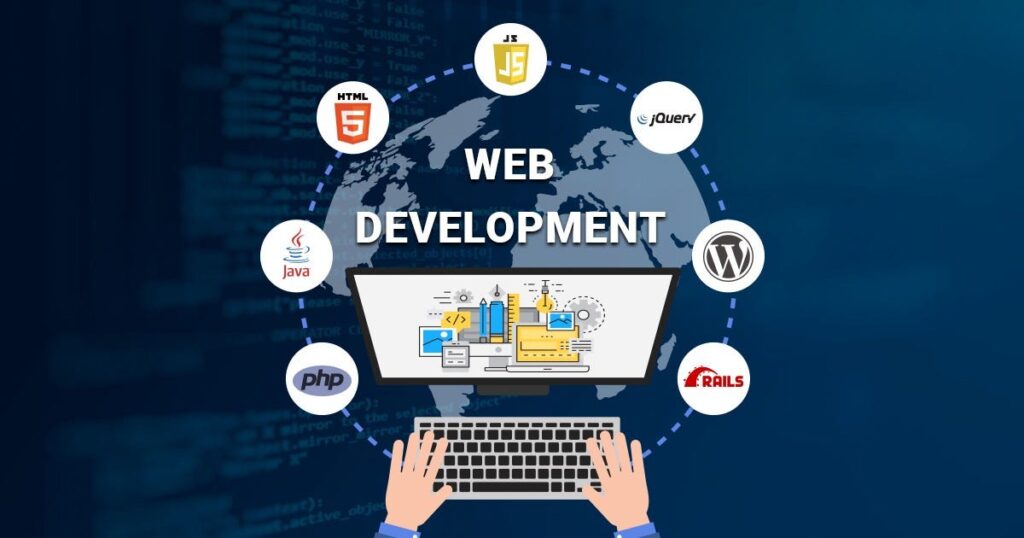Introduction to Web Development
In today’s digital age, the internet serves as a central hub for information, commerce, and communication. Behind the scenes of every website we visit lies the intricate craft of web development. But what exactly is web development, and how does it shape our online experiences? In this comprehensive guide, we delve into the world of web development, exploring its fundamentals, technologies, and the crucial role it plays in shaping the modern web landscape.
Understanding Web Development
Web development encompasses the process of creating, building, and maintaining websites and web applications. It involves a combination of programming, design, and content management, aimed at delivering seamless and engaging user experiences. From simple static web pages to complex dynamic platforms, web development caters to a wide range of digital needs, spanning personal blogs, e-commerce sites, social networks, and beyond.
Key Components of Web Development
Front-End Development: Front-end development focuses on the client-side of web applications, where users interact directly. It involves crafting visually appealing and responsive interfaces using technologies such as HTML (Hypertext Markup Language), CSS (Cascading Style Sheets), and JavaScript. Front-end developers strive to enhance user experience by ensuring accessibility, usability, and cross-browser compatibility.
Back-End Development: Back-end development powers the server-side of web applications, managing data storage, retrieval, and processing. It involves creating robust server-side logic using programming languages like Python, Ruby, PHP, or JavaScript (with Node.js). Back-end developers work with databases, server frameworks, and APIs (Application Programming Interfaces) to build scalable and secure web services.
Full-Stack Development: Full-stack development combines both front-end and back-end technologies, enabling developers to handle every aspect of web development. Full-stack developers possess a versatile skill set, capable of designing user interfaces, implementing business logic, and managing server infrastructure. They play a pivotal role in bridging the gap between client-side and server-side components, ensuring seamless integration and functionality.
Emerging Trends in Web Development
As technology evolves, so does the field of web development. Several trends are shaping the future of web development, revolutionizing how websites are built and experienced:
Progressive Web Apps (PWAs): PWAs leverage modern web capabilities to deliver app-like experiences across all devices. They offer features such as offline access, push notifications, and installation prompts, blurring the line between web and native applications. With PWAs, users can enjoy fast, reliable, and engaging experiences, regardless of their internet connection.
Responsive Web Design: Responsive web design ensures that websites adapt seamlessly to various screen sizes and devices, providing consistent user experiences across desktops, tablets, and smartphones. With the proliferation of mobile usage, responsive design has become a standard practice in web development, prioritizing accessibility and usability for all users.
Voice Search Optimization: With the rise of voice-enabled devices and virtual assistants, voice search optimization has become increasingly important for web developers. By optimizing content and site structure for voice queries, developers can enhance discoverability and accessibility, catering to the growing number of voice search users.
Blockchain Integration: Blockchain technology is finding its way into web developers, offering decentralized solutions for identity verification, secure transactions, and data management. By leveraging blockchain protocols, developers can enhance privacy, transparency, and trust in web applications, paving the way for a more secure and resilient internet.
Challenges and Opportunities in Web Development
While web developers offers immense opportunities for innovation and creativity, it also presents several challenges:
Security Concerns: Cybersecurity threats pose a significant risk to web applications, ranging from data breaches to malicious attacks. Web developers must prioritize security measures such as encryption, authentication, and secure coding practices to safeguard sensitive information and protect against cyber threats.
Performance Optimization: As websites become more complex and feature-rich, optimizing performance becomes crucial for delivering fast and responsive user experiences. Developers must employ techniques such as code minification, caching, and content delivery networks (CDNs) to reduce load times and improve site performance.
Browser Compatibility: Ensuring compatibility across various web browsers and devices can be a daunting task for developers. Differences in rendering engines, CSS support, and JavaScript behavior can lead to inconsistencies in how websites are displayed and function. Developers must conduct thorough testing and implement fallbacks to ensure a seamless experience for all users.
Accessibility Standards: Accessibility is a critical aspect of web development, ensuring that websites are usable by people of all abilities. Developers must adhere to accessibility standards such as the Web Content Accessibility Guidelines (WCAG), implementing features such as alternative text for images, keyboard navigation, and semantic HTML to accommodate users with disabilities.
Despite these challenges, web development presents numerous opportunities for growth and innovation:
Continuous Learning: Web development is a dynamic field that constantly evolves with new technologies and trends. Developers have the opportunity to engage in lifelong learning, acquiring new skills, experimenting with emerging technologies, and staying abreast of industry developments.
Global Reach: The internet offers a vast global audience, providing developers with the opportunity to reach users across geographical boundaries. Whether building a personal blog or an e-commerce platform, web developers can leverage the internet to connect with diverse audiences and communities around the world.
Entrepreneurial Ventures: Web development empowers individuals and businesses to bring their ideas to life and launch innovative digital products and services. From startups to established enterprises, web development serves as a catalyst for entrepreneurship, enabling creators to build and scale their online ventures.
Conclusion
In conclusion, web development lies at the heart of the digital revolution, shaping the way we interact, communicate, and transact online. From crafting intuitive user interfaces to implementing robust server-side logic, web developers play a pivotal role in creating the websites and web applications that power the internet. As technology continues to advance and user expectations evolve, web development will remain a dynamic and vibrant field, driving innovation and shaping the future of the digital landscape. Whether you’re a seasoned developer or just starting your journey, the world of web development offers endless opportunities for creativity, learning, and growth. So, dive in, explore new technologies, and make your mark on the web.
